Body Massage for Stress & Anxiety Relief - Natural Remedy Guide
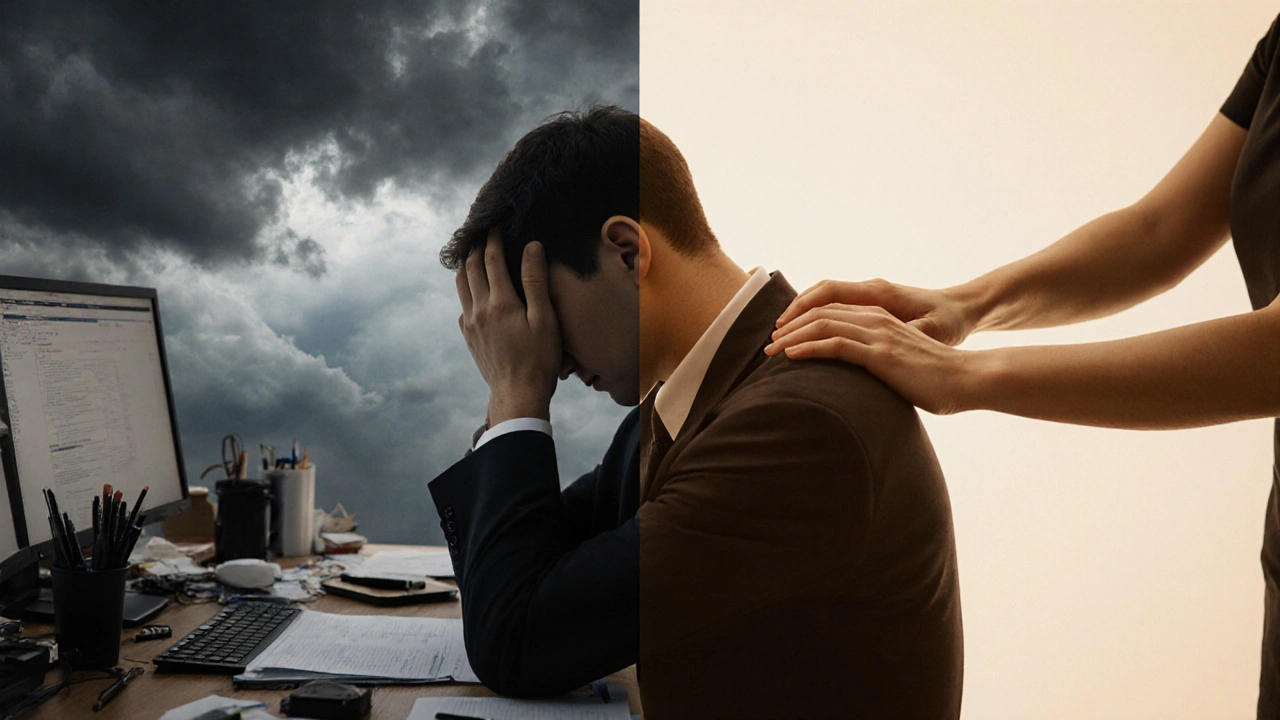
Feeling the weight of daily pressure and racing thoughts? A well-timed body massage might be the simple, drug‑free solution you’ve been overlooking. By targeting muscles, circulation, and the nervous system, massage can dial down the body’s stress alarm and calm anxious feelings, all without a prescription.
Why Massage Works on Stress and Anxiety
When you book a session, you’re not just getting a pleasant rub; you’re triggering a cascade of physiological changes. Endorphins are natural pain‑killers that rise during a therapeutic touch, creating a sense of well‑being and reducing the perception of stress.
At the same time, Cortisol, the body’s primary stress hormone, typically drops after 30‑45 minutes of consistent pressure. Lower cortisol means less heart‑rate spikes, steadier blood‑pressure, and a calmer mind.
These biochemical shifts also influence the brain’s limbic system, the region that processes fear and anxiety. By soothing the nervous system, massage helps the brain reset its “danger” alerts, making you feel more relaxed and focused.
Top Massage Types for Stress Relief
Not all massages are created equal. Some styles emphasize gentle strokes, while others use deeper pressure to release chronic tension. Below is a quick comparison of the three most popular approaches for anxiety and stress.
| Massage Type | Pressure Level | Best For | Typical Session Length |
|---|---|---|---|
| Swedish Massage | Light to moderate | General relaxation, beginners | 60‑90 minutes |
| Deep Tissue Massage | Firm, focused | Chronic muscle knots, high tension | 60‑120 minutes |
| Aromatherapy Massage | Varies (often gentle) | Emotional balance, scent‑driven calm | 60‑90 minutes |
For most people battling everyday stress, a Swedish session offers the easiest entry point. If you carry tight shoulders from desk work, deep‑tissue can melt stubborn knots, while aromatherapy adds essential‑oil benefits that further lower anxiety levels.
What to Expect in a Typical Session
A professional Massage Therapist will start with a brief consultation. They’ll ask about recent stressors, any medical conditions, and preferred pressure. This conversation ensures the treatment targets the right areas without over‑doing it.
- Environment: Dimmed lights, soft music, and a comfortable temperature set the mood for relaxation.
- Duration: Most stress‑focused appointments run 60 minutes, giving enough time for a full‑body sweep and a focused release of tension points.
- Techniques: Expect long, flowing strokes (effleurage), kneading (pétrissage), and gentle joint mobilizations.
- After‑care: Therapists often suggest drinking water to flush out metabolic waste released during the massage.
Understanding the flow reduces any nervousness about the unknown and helps you settle in faster.

How to Find a Qualified Therapist in London
London boasts a rich network of registered practitioners, but not all agencies guarantee the same standards. Look for the following credentials:
- Membership in the British Association of Massage Therapists (BAPT) or the Complementary and Natural Healthcare Council (CNHC). These bodies enforce a minimum of 500 training hours and a code of ethics.
- Specialisation in stress‑relief or mental‑health massage, often listed on the therapist’s profile.
- Positive client reviews that mention reduced anxiety, not just general satisfaction.
- Clear hygiene policies and a private, clean treatment room.
Many therapists in the Shoreditch and Camden areas offer 30‑minute “quick‑relief” slots that fit around a busy workday. Booking online is simple, but a quick phone call can confirm they’re comfortable working with any existing conditions you might have.
DIY Self‑Massage to Calm Nerves Anywhere
Professional sessions are fantastic, but you can keep the calm going with a few simple self‑techniques. All you need is your hands and a few minutes.
- Neck Release: Tilt your head right, opposite hand gently pulls the left ear toward the shoulder for 15‑20 seconds. Switch sides. This eases the trapezius muscles that store stress.
- Shoulder Shrug Roll: Raise both shoulders toward ears, roll them back and down in a smooth circle. Repeat 10 times to melt tightness.
- Hand Squeeze: Make a loose fist, then spread fingers wide, stretching the palm. Follow with a firm palm‑to‑palm press for 30 seconds to stimulate nerve endings.
Combine these moves with deep breathing-inhale for four counts, hold two, exhale for six. The breath‑work amplifies the parasympathetic response that massage already triggers.
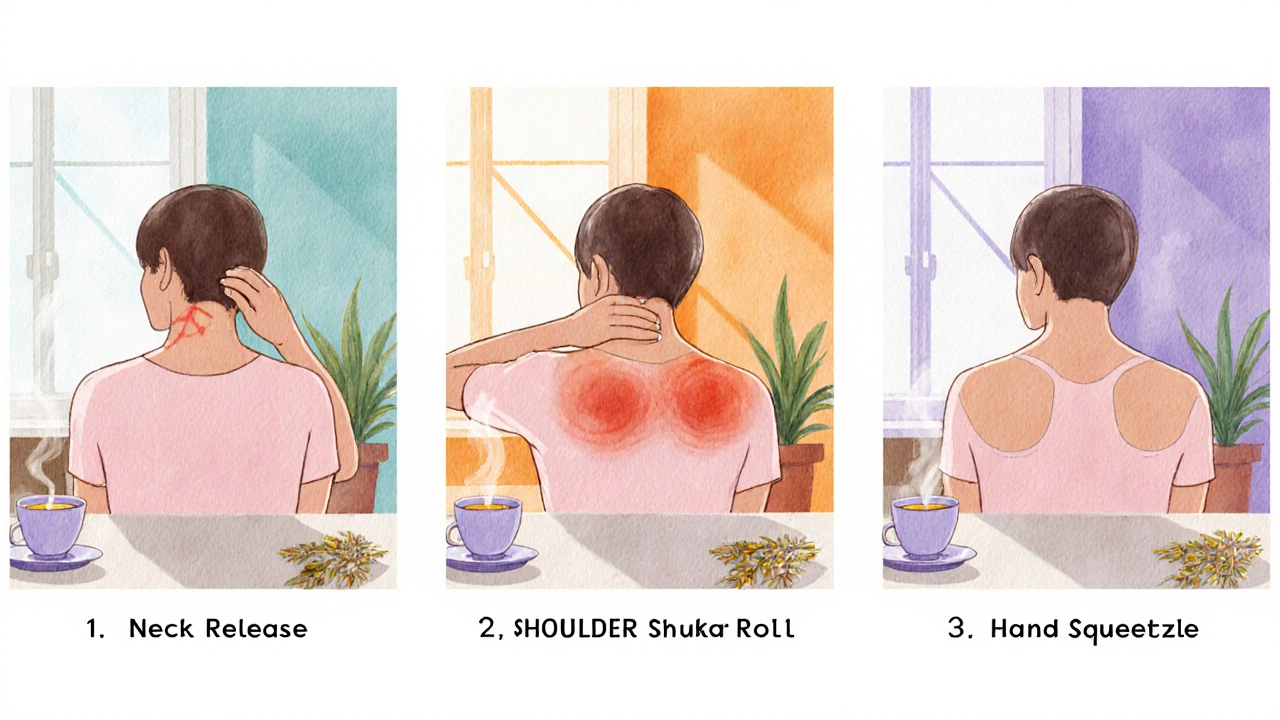
Safety, Contraindications, and When to Skip
Massage is safe for most, but there are red flags where you should pause or modify the treatment.
- Fever, flu, or contagious skin conditions - risk of spreading infection.
- Recent surgery, open wounds, or deep vein thrombosis - pressure could worsen healing.
- Severe osteoporosis or fractures - deep pressure may cause fractures.
- Pregnancy (especially first trimester) - requires a therapist trained in prenatal massage.
If any of these apply, discuss alternatives such as gentle stretching, light Swedish strokes, or simply postponing until you’re cleared by a healthcare professional.
Frequently Asked Questions
Can a single massage session lower anxiety?
Yes. Studies from the University of York show a 30‑minute Swedish massage can reduce state anxiety scores by up to 20% for a few hours after the session, thanks to endorphin release and cortisol reduction.
How often should I book a massage for optimal stress management?
For most adults, a weekly 60‑minute session maintains lower cortisol levels. If budget or time is tight, bi‑weekly sessions still provide noticeable benefits, especially when paired with regular self‑massage.
Is aromatherapy massage better than Swedish for anxiety?
Aromatherapy adds essential‑oil compounds like lavender or bergamot, which have documented anxiolytic (anxiety‑reducing) effects. When combined with gentle Swedish strokes, the overall impact on mood can be stronger than Swedish alone.
Can I get the same benefits from a massage chair?
Massage chairs can mimic percussion and rolling motions, offering temporary relief. However, they lack the personalized pressure adjustment and therapist‑guided breathing cues that fully trigger the nervous‑system response.
What should I do after a session to keep the calm?
Drink plenty of water, avoid caffeine for the next couple of hours, and try a short meditation or a 10‑minute walk. These actions extend the cortisol‑lowering window created by the massage.

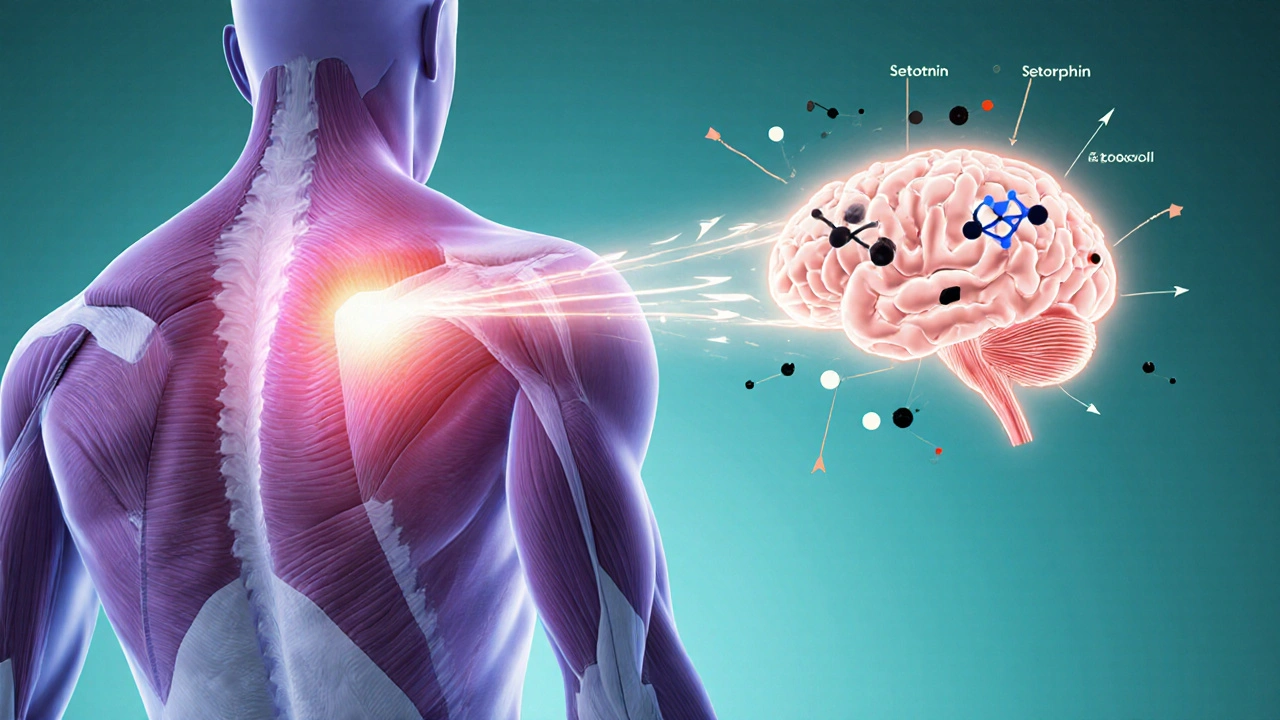
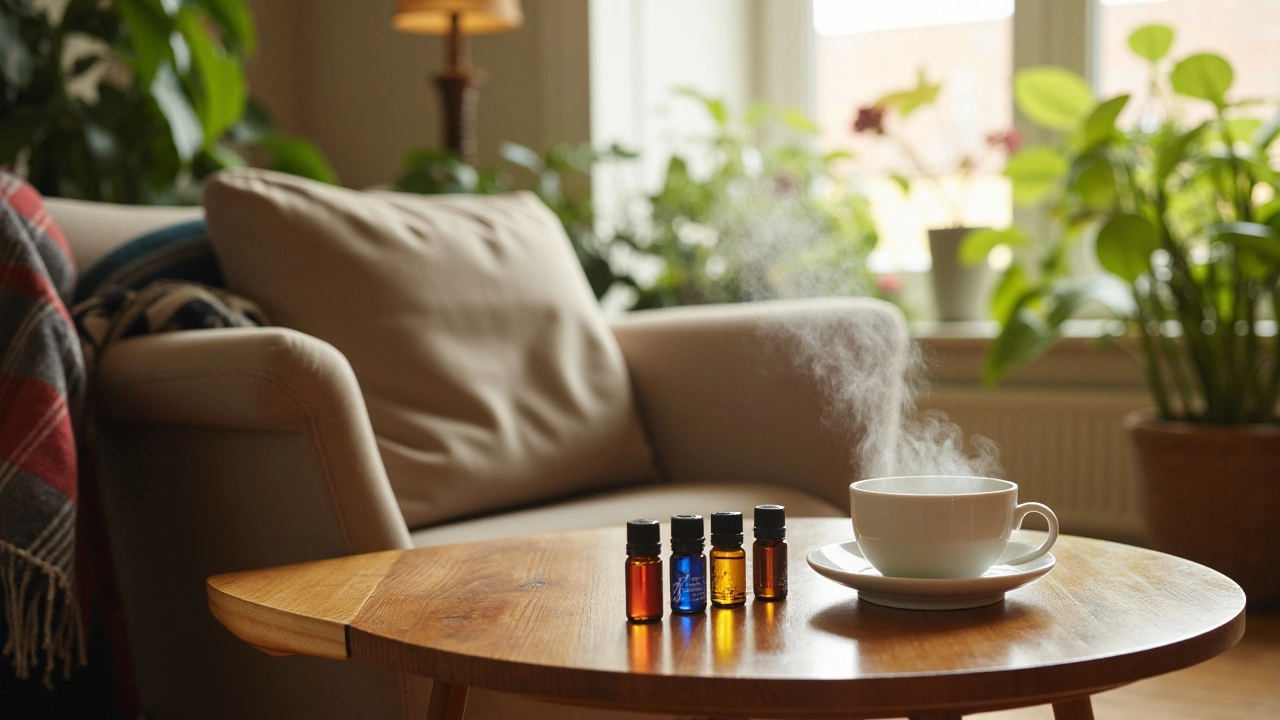
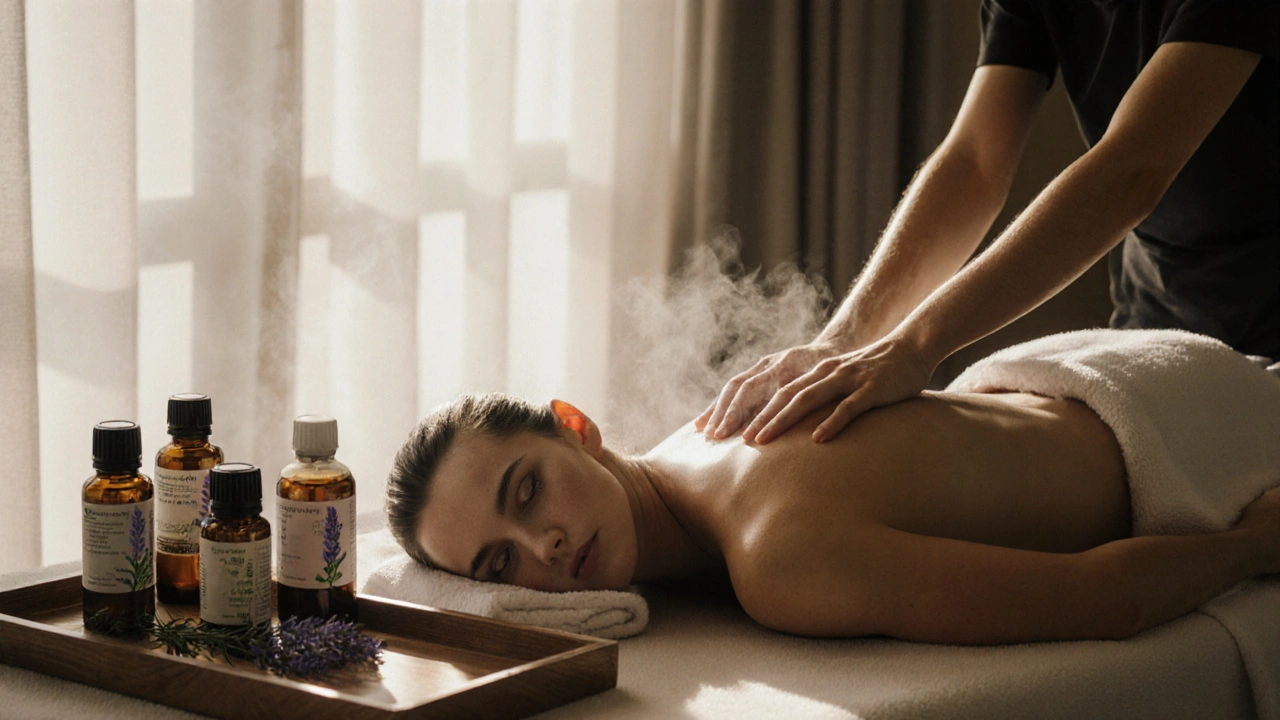
Katelyn Stephens
October 12, 2025 AT 14:10If you’ve been feeling the grind, a regular Swedish session can be a game‑changer. It’s amazing how a simple stretch of muscles can melt tension and lift your mood. Start with a weekly appointment and pair it with the breathing tips from the guide. You’ll notice your cortisol levels easing and your mind clearing.
Mona Nona
October 12, 2025 AT 14:43OMG I sweart that a single rub can turn my whole day from *doom* to *boom*!!!
Mandeep Adhikari
October 12, 2025 AT 22:13Listen up, friends, because managing stress with massage is not a luxury-it’s a vital part of a healthy lifestyle. First, you must understand that your nervous system reacts to touch in a predictable way, and you can harness that response deliberately. Choose a therapist who holds a BAPT or CNHC certification; this guarantees at least 500 hours of rigorous training and an ethical code you can trust. Don’t settle for a hobbyist who offers a discount just because they need the cash-your mental well‑being is worth the investment. Schedule a consistent routine: weekly if your budget allows, or at the very least every two weeks, because irregular sessions dilute the cortisol‑lowering effect. Before each appointment, spend five minutes journaling the specific stressors you’re carrying; this gives the therapist precise targets for pressure. During the session, communicate assertively if the pressure is too light or too deep, because a vague ‘it’s fine’ will only give you a half‑baked benefit. Afterward, drink at least two liters of water within the next hour to flush out metabolic waste and support lymphatic drainage. Pair the massage with a short mindfulness practice-no more than ten minutes-to lock in the endorphin surge you just earned. If you’re prone to anxiety spikes, add an aromatherapy element with lavender or bergamot, but insist the therapist uses a dilution safe for your skin. Avoid caffeine and heavy meals for three hours post‑massage; these can counteract the parasympathetic activation you just triggered. Remember, massage is a collaborative experience: you are the driver, the therapist is the guide, and together you steer toward calm. Don’t be shy about asking for a ‘quick‑relief’ 30‑minute slot when you’re under a deadline, but make it clear you still expect the same level of focused pressure. If you ever notice bruising, lingering pain, or heightened anxiety after a session, stop immediately and consult a medical professional before booking again. Finally, share what works for you with your community; the more we spread proven practices, the stronger our collective resilience becomes. Take charge, stay aggressive in protecting your mental health, and let the science of touch be your secret weapon.
Alison Kilpe-Smith
October 12, 2025 AT 22:46Wow, that was a power‑packed guide, and I love the actionable steps you laid out! Think of each massage as a recharge station for your brain, not just a luxury. When you combine those stretches with a quick gratitude list, the ripple effect on mood is insane. Keep the vibe light, breathe deep, and trust that your body knows how to reset. You’ve got this-just roll out the mat and let the good vibes flow.
Laurie Ralphs
October 12, 2025 AT 23:36I’m going to be brutally honest here, because sugar‑coating won’t help anyone 😊. Your enthusiasm is great, but let’s not ignore the hard facts about water intake and post‑massage nutrition 😤. Drinking two liters isn’t just a suggestion; it’s a physiological necessity to prevent toxin buildup, and I’m not making that up. Also, the claim that a 30‑minute ‘quick‑relief’ slot can replace a full session is shaky at best, unless the therapist knows exactly where you hold tension. If you’re booking a therapist without checking their certification, you’re basically gambling with your nervous system. I’ve seen clients come back with bruises because the practitioner was too aggressive, which contradicts the whole point of calming anxiety. So, enforce the rules: verify credentials, state your pressure preferences loudly, and hydrate like your life depends on it. Your body will thank you, and your brain will finally get that break from the constant stress alarm 🧠.
Anwen Caedmon
October 14, 2025 AT 02:00Ah yes, because everyone’s first thought when they’re stressed is to book a stranger to press on their backs, right? If you prefer staring at a wall, that works too, but massage chairs apparently ‘mimic’ the experience-what a novelty. Honestly, the only thing more therapeutic than a good rub might be a solid dose of common sense.
ANDRES BELLO GARCIA
October 14, 2025 AT 02:50Massage can help, but it’s important to choose a qualified therapist. Always listen to your body and stop if something feels wrong.
Ashley Williams
October 14, 2025 AT 03:40Absolutely-respecting personal limits is key; a gentle approach often yields the best results. I’d add that incorporating a short walk after the session can amplify circulation benefits! Don’t forget to drink water-yes, actually hydrate! And remember, self‑care isn’t selfish; it’s a cultural shift toward collective well‑being.